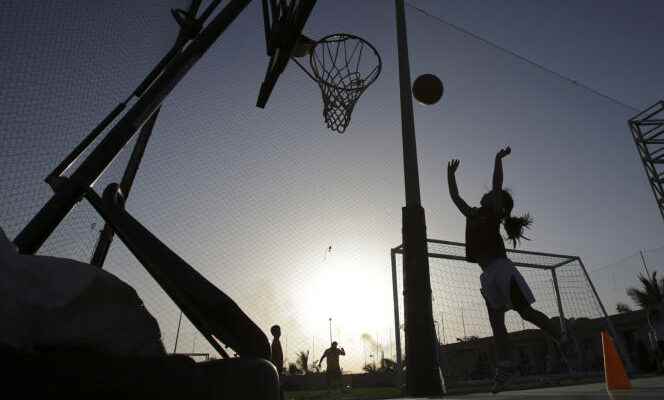10,000+ steps. The numbers are hardly encouraging. In the 2022 edition of the Report card from the National Observatory of the level of physical activity and sedentary lifestyle (Onaps), it appears that only half of boys and a third of girls aged 6 to 17 reach the recommendations (at least 60 minutes of physical activity per moderate to high intensity day). “Puberty is one of the markers of the decline in physical activity regardless of gender”, and the decline is even more marked for girls, finds this report published on October 25. The numbers speak for themselves: “70% of boys and 56% of girls aged 6 to 10 meet the recommendations, compared to only 34% of boys and 20% of girls aged 11-14, and 40% of boys and 16% of girls aged 15- 17 years. »
This finding agrees with that of a World Health Organization (WHO) report, published in early October : “In most countries, women are less active than men […] and in all age groups. And girls are more inactive than boys in most countries (85% and 77.6% respectively). » The level of sedentary lifestyle has also increased sharply with the health crisis, due to increased screen time.
How can such a gender difference be explained? “Studies show that girls are less attracted to competitive practice”, notes Alicia Fillon, project manager at ONAPS and co-author of the Report card. Indeed, the unisport federations (which bring together 60% of licensees, or 5.2 million children) have 64.2% boys and 35% girls. This difference, however, tends to disappear, specifies the Report card, for multisport federations, mainly school sport, more oriented towards pleasure sport. “We talk much less about women who win sports competitions than about men, despite many high-level female athletes. It was cartoonish when the women’s handball team won the gold medal at the Olympic Games in Tokyo, in 2020”says Pascale Duché, director of the Impact of physical activity on health laboratory at the University of Toulon.
“Fight very early on against preconceived ideas”
Another brake, “the question of the safety of places where physical activity is practiced and its surroundings and its perception can limit parents’ encouragement of physical activity for girls, more than for boys”, notes Irène Margaritis, assistant to the director of risk assessment at the National Health Security Agency (Anses). However, we know that sports parents have an influence and “can provide different types of support, whether logistical or persuasive”indicated Public Health France, which has just launched the second part of its campaign “Make teens move”.
You have 27.17% of this article left to read. The following is for subscribers only.
